- D1 Human Nutrition
- D2 Digestion
- D3 The Liver
- D4 The Heart
- D5 Hormones - HL
- D6 Respiratory gases - HL
- Exam style question on D1
- Model answer
- Extra exam style question on D1
- Model answer
- Exam style question on D2
- Model answer
- Exam style question on D3
- Model answer
- Exam style question on D4
- Model answer
- Exam style question on D5
- Model answer
- Exam style question on D6
- Model answer
- Drag and drop activities
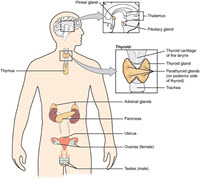
This section explains the details which students are required to know.
There are understandings, skills and suggestions for revision questions.
D1 Human Nutrition
- Essential nutrients have to part of the diet because they cannot be synthesized by the body, These include:
- Dietary minerals (chemical elements)
- Vitamins are chemically diverse carbon compounds.
- Some fatty acids
- some amino acids - needed for protein production.
- Malnutrition may be caused by a deficiency, imbalance or excess of nutrients in the diet.
- The hypothalamus controls appetite.
- Hypertension and type II diabetes are more likely if a person is overweight.
- Starvation can cause body tissue to be broken down.
Revision Question(s)
- Do pizza's contain all the essential nutrients for a healthy body?
- What are the essential nutrients?
- What is the role of vitamins and minerals in the diet?
-
What are the effects of malnutrition?
-
How can malnutrition involve eating too much, too little, or both?
- How can combustion of food help us to calculate the energy content of the food?
Skills ( can you ... ?)
- Know that ascorbic acid (Vit C) is produced by some mammals, but not others.
- Understanding of how phenylketonuria (PKU) caused by a genetic mutation, can be treated by controlling the diet.
- Know how rickets (or osteomalacia) is caused by a lack of Vitamin D or calcium leading to problems in bone mineralization.
- Understand that heart muscle is broken down in anorexia.
- Know how cholesterol in blood can be used as an indicator or coronary heart disease risk.
- Determine the energy content of food by combustion, heating water.
- Use databases to calculate nutritional composition of a daily diet.
D2 Digestion
- The structure of cells of the epithelium of the villi, including microvilli
- Exocrine glands secrete to the surface of the body or the lumen of the gut.
- Nervous and hormonal mechanisms control the secretion of digestive juices.
- The volume and content of gastric secretions are controlled by nervous and hormonal mechanisms.
- Acid conditions in the stomach favour some hydrolysis reactions and help to control pathogens in ingested food.
- The structure of cells of the epithelium of the villi, including microvilli and mitochondria, is adapted to the absorption of food.
- The rate of transit of materials through the large intestine is positively correlated with their fibre content.
- Materials not absorbed are egested.
Revision Questions
-
What do we already know about the structure of lining of the digestive system?
-
How does the body (brain) control the functioning of the organs?
-
What do we know already about enzymes
- Do your stomach lining, the pancreas and other digestive glands produce digestive juices all the time?
- Do these secretions always contain the same amounts of digestive enzymes?
- If not, how are these glands controlled?
-
How does the stomach protect itself from the hydrochloric acid and protein digesting enzymes it contains? - What could happen if a gunshot wound or a bacteria like H. pylori damaged the stomach lining?
Skills ( can you ... ?)
- Identify exocrine gland cells that secrete digestive juices and villus epithelium cells that absorb digested foods from electron micrographs
- Explain how the reduction of stomach acid secretion by proton pump inhibitor drugs.
- Understand dehydration due to cholera toxin.
- Use the example of Helicobacter pylori infection as a cause of stomach ulcers.
D3 The Liver
- The functions of the liver
- removes toxins from the blood
- detoxifies toxins - e.g. alcohol.
- recycles components of red blood cells. (erythrocytes)
- Iron is carried to bone marrow for production of hemoglobin for new red blood cells.
- Surplus cholesterol is converted to bile salts.
- blood is intercepted from the gut.
- regulates nutrient levels, eg: glucose
- stores some nutrients; e.g. vit. A & D
- Hepatocytes produce plasma proteins (e.g. fibrinogen) using their endoplasmic reticulum and Golgi apparatus.
- Temporary slides of hepatocytes can be prepared from fresh liver.
- Kupffer cells use phagocytosis to begin recycling of red blood cells.
- Sinusoids carry blood through the liver, they are different in structure to capillaries.
Revision Question(s)
- Liver cells were used as a model eukaryote animal cell in topic 1. How many different types of organelle do they contain.
- Why do liver cells make better cell models than motor neurones?
- What are the functions of rER, Golgi apparatus and lysosomes in cells?
- What is the role of the liver in the body?
- Which systems of the body would be most affected if the liver stops working?
- Hepatocytes and Kupffer cells are two specialised cells in the liver, what special jobs might they have.
- Sinusoids are special channels through which blood flows in the liver, why do they have 'fenestrated' walls (with holes)?
Skills ( can you ... ?)
- Suggest causes of jaundice, and link them to liver function?
- Explain that liver damage due to infection or alcohol, disrupts the liver’s ability to process bilirubin,
- Say that bilirubin is a waste product of red blood cells break down normally made into bile in the liver.
- Explain the dual blood supply to the liver.
- Describe the differences between sinusoids and capillaries.
D4 The Heart
- Structure of cardiac muscle cells includes branching and intercalated discs.
- This structure aids propagation of stimuli through the heart wall.
- Control of heart beat within the heart.
- Signals from the sino-atrial node that cause contraction of atria cannot pass directly from atria to ventricles.
- There is a delay between the arrival and passing on of a stimulus at the atrioventricular node.
- This delay allows time for atrial systole before the atrio-ventricular valves close in ventricular systole.
- Conducting fibres ensure coordinated contraction of the entire ventricle wall.
- Normal heart sounds are caused by the atrio-ventricular valves and semilunar valves closing & causing changes in blood flow.
Revision Question(s)
- What is special about the structure of cardiac muscle?
- The heart is myogenic, it can beat on its own. How does this happen?
- What is the function of the valves in the heart & how do they change blood flow?
Skills ( can you ... ?)
- Say how artificial pacemakers can regulate the heart rate.
- Suggest how defibrillation can treat life-threatening cardiac conditions.
- Outline the causes and consequences of hypertension and thrombosis.
- Measure and interpret the heart rate under different conditions.
- Interpret systolic and diastolic blood pressure measurements, e.g. 120 / 80 or 12 / 8.
- Map the cardiac cycle to a normal ECG trace.
- Analyse epidemiological data relating to the incidence of coronary heart disease.
D5 Hormones - HL
- Endocrine glands secrete hormones directly into the bloodstream.
- Steroid hormones
- bind to receptor proteins in the cytoplasm of the target cell to
- form a receptor–hormone complex.
- which promotes the transcription of specific genes.
- Peptide hormones
- bind to receptors in the plasma membrane of the target cell.
- this binding activates a cascade of reactions
- mediated by a second messenger inside the cell.
- The hypothalamus controls hormone secretion by the anterior and posterior lobes of the pituitary gland.
- Hormones secreted by the pituitary control growth, developmental changes, reproduction and homeostasis.
Revision Question(s)
-
How can a chemical released into the blood cause a change in the functioning of another cell
-
What different types of hormones are there?
-
- How can nerves in the hypothalamus control a gland like the pituitary gland?
- Could a neurone make a hormone?
Skills ( can you ... ?)
- Say why some athletes take growth hormones to build muscles.
- Outline the control of milk secretion by the hormones oxytocin and prolactin?
D6 Respiratory gases - HL
- Oxygen dissociation curves show the oxygen affinity of hemoglobin.
- The increased release of oxygen by hemoglobin in respiring tissues is explained by the Bohr shift.
- Fetal hemoglobin is different from adult hemoglobin. This allows the transfer of oxygen in the placenta from mother's hemoglobin to fetal hemoglobin.
-
- Carbon dioxide is carried in the blood in three ways:
- in solution
- bound to hemoglobin
- transformed in red blood cells into hydrogencarbonate ions which diffuse into the blood plasma.
- changes in blood pH caused by changes in CO2 concentration are detected by chemoreceptors.
- The respiratory control centre in the medulla oblongata controls the the rate of ventilation in response to the amount of CO2 in the blood. (during exercise!)
Revision Question(s)
- What does "partial pressure" represent?
- If the hemoglobin in the lungs attaches to oxygen molecules, how do the muscles take this oxygen away from the hemoglobin?
- A fetus must also take the oxygen from the mother's hemoglobin, how can it do that?
- How many ways can you think of that carbon dioxide could exist in a solution. think of the carbon cycle.
- What does CO2 do to the pH of a solution?
- Which part of the brain control pulse rate.
Skills ( can you ... ?)
- Analyse oxygen dissociation curves for hemoglobin and myoglobin.
- Describe the consequences of high altitude for gas exchange.
- Say how breating helps the pH of blood to be regulated to stay within the narrow range of 7.35 to 7.45.
- Give causes and treatments of emphysema.
- Identify pneumocytes, capillary endothelium cells and blood cells in light micrographs and electron micrographs of lung tissue.
Extra exam style question on D1
A balanced diet is essential for human health.
Answer the question on a piece of paper, then check your answer against the model answer below.
Discuss the effects of malnutrition in humans. (6 marks)
Examiner hint: Use specific examples. Remember that malnutrition can be lack or excess of nutrients.
Drag and drop activities
Test your ability to construct biological explanations using the drag and drop question below.
D1 James Lind carried out an experiment on sailors in the 18th century by manipulating their diet to investigate scurvy.

It is now regarded as unethical to experiment on human subjects as the lack or excess of vitamins in the diet can cause malnutrition and harm to the individual.
depriving data unable diet human Vitamin C Vitamin B12 condition manufacture mammalian models
Vitamin studies are carried out on mammals as for humans . These studies may derive data which is a useful model for humans or may produce that does not relate to the human .
(ascorbic acid) deficiency causes scurvy in humans. Scientific studies were carried out in mice, rats and Guinea pigs by them of Vitamin C in their to induce scurvy but the studies were unsuccessful, the rodents deprived of vitamin C remained healthy.
This led to the belief that scurvy was a uniquely disorder but it later was discovered that these and many other animals can vitamin C but humans are to do so.
Animal models are useful studies but the data obtained must be scrutinised carefully.
D2 Stomach lesios (ulcers) are mostly caused by bacteria, commonly present since infancy.
damage increase lining proton antiseptics Heliobacter E coli Lactobacillus decrease acid antibiotics pathogen electron
pylori is a bacterial that is the main cause of stomach ulcers. It damages the stomach by causing lesions allowing entry of gastric fluid to stomach tissues which also the tissues and cause pain.
The normal methods of treatment are to kill the pathogen and pump inhibitors which decrease stomach secretion to stomach pH (the fluid becomes less acidic).
The treatment for stomach ulcers is antibiotic to kill the bacteria and lessening acid secretion to limit pain and tissue damage.
D3 The circulation of blood to and inside the liver is essential to its’ function.
low anaerobic from sinusoids aerobic nutrients portal direct artery aorta
The hepatic branches from the dorsal and supplies oxygen for liver respiration.
The hepatic vein carries blood to the liver from the intestine. This blood is nutrient rich and in oxygen. It flows into liver where hepatocytes have contact with the blood in order to transfer digested form the blood to the liver for storage and also to carry out other functions.
The hepatic vein collects the blood the liver to return it to the circulation in the posterior vena cava.
The liver has a double circulation, an artery and a vein for delivery and removal of blood and the portal vein for the liver to regulate absorbed nutrients.
D4 Hypertension is the term given to a blood pressure which is continually above the normal values.
diameter nicotine plaque volume length natural cholesterol exercise BMI osmosis genetic efficiency
Hypertension can be caused by one or all of the following:
- High levels which can cause obstruction by formation in arteries, decreasing arterial and elasticity.
- Obesity ( above 30)
- Lack of lessening circulatory .
- High salt levels in blood, usually caused by ingestion causing retention of water in the blood by increasing blood .
- A predisposition.
- Alcohol or intake.
Hypertension has dietary and genetic causes.
D5 Steroid and peptide hormones have different modes of action.
through transcription lipid activate cannot proteins metabolic translation secondary cascade water receptors
Steroid hormones are soluble and can pass the plasma membrane to bind to protein in the cytoplasm of the cell. The hormone-receptor complex passes through the nuclear pore, binding to factors on DNA promoting the formation of , usually enzymes, to affect cell function.
Protein hormones pass through the plasma membrane and bind to receptors in the membrane, causing the release of a messenger. This causes a effect which can or inhibit enzymes involved in reactions.
Steroid hormones alter cell function by affecting transcription, protein hormones cause activation or inhibition of metabolic pathways
D6 The ventilation rate must be controlled in order to maintain the correct concentration of respiratory gases in the blood.
flow cerebellum autonomic aorta lungs intercostal oblongata Stretch respiratory volume inhaled pH carotid medulla
The ventilation rate is controlled by the nervous system through the centre of the medulla of the brain.
Ventilation is maintained by rhythmicity and adjusted by chemoreceptors.
receptors in the thorax and inhibit inspiration and promote expiration to equalise the volumes of air and exhaled.
Chemoreceptors in the oblongata, and arteries are sensitive to blood and carbon dioxide concentration rise. They stimulate the respirarory centre which in turn sends impulses through the and phrenic nerves to increase the tidal and rate of breathing.
Rhythmicity gives coordinated intake and exhalation of air, chemoreceptors cause adjustments of exhalation rate.


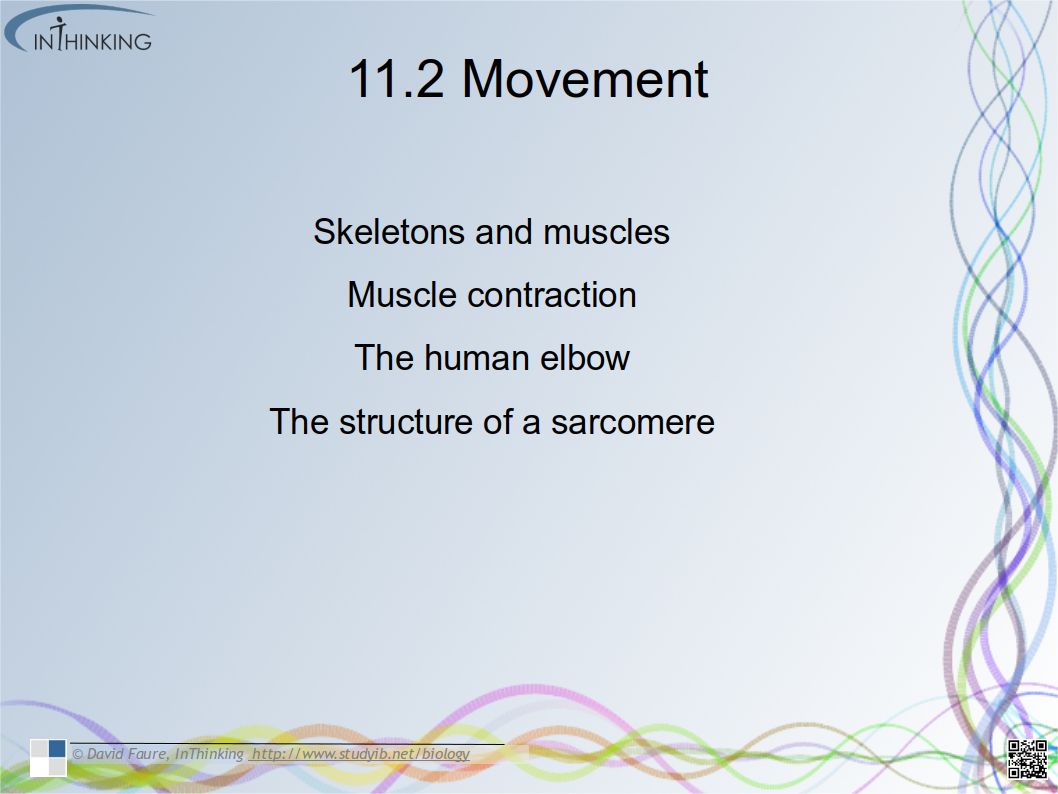
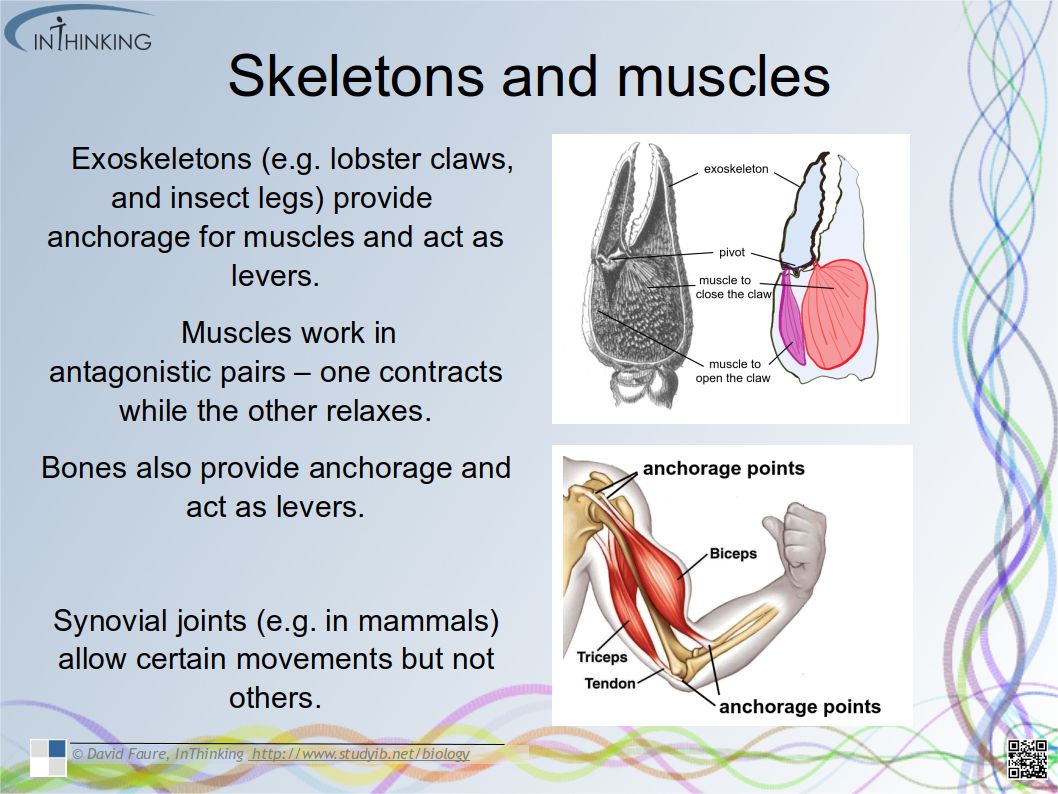
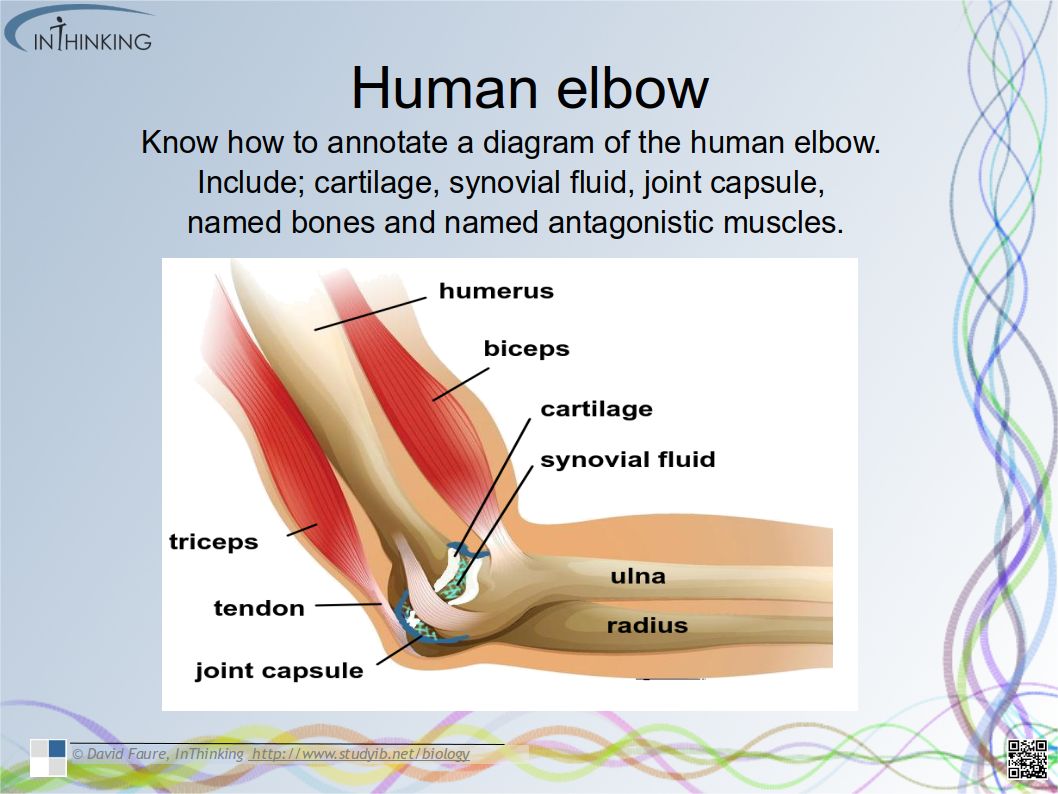

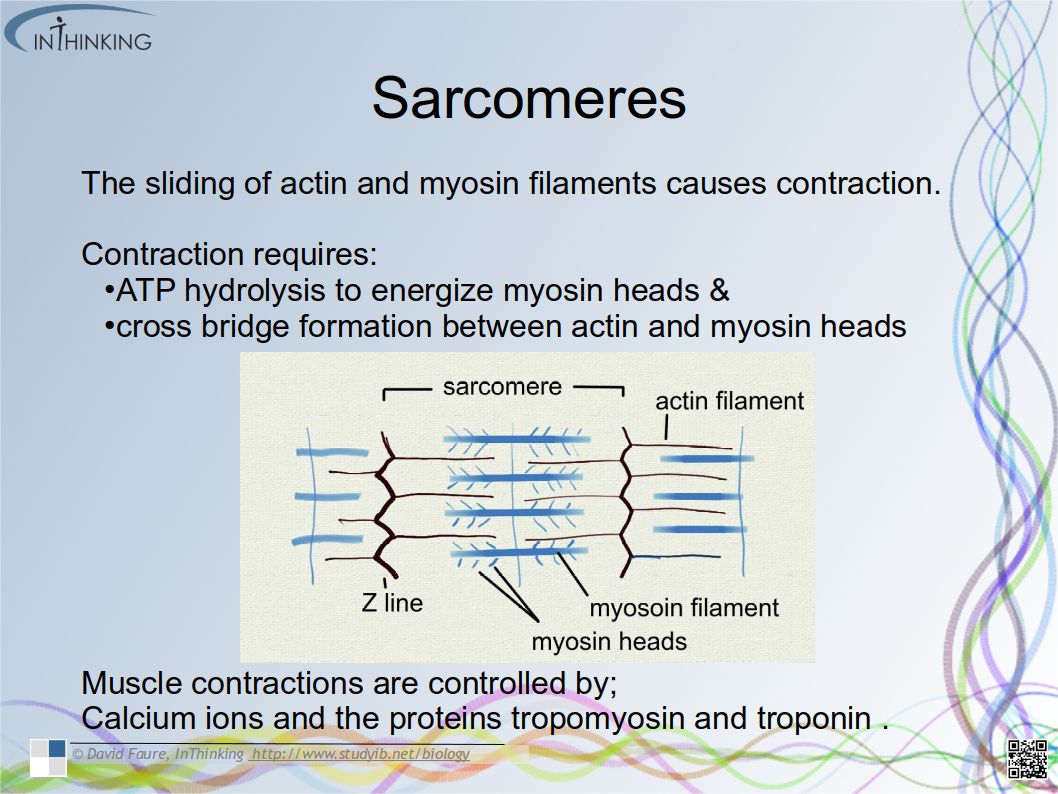

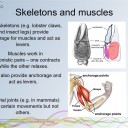
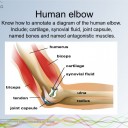

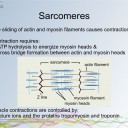

 Twitter
Twitter  Facebook
Facebook  LinkedIn
LinkedIn